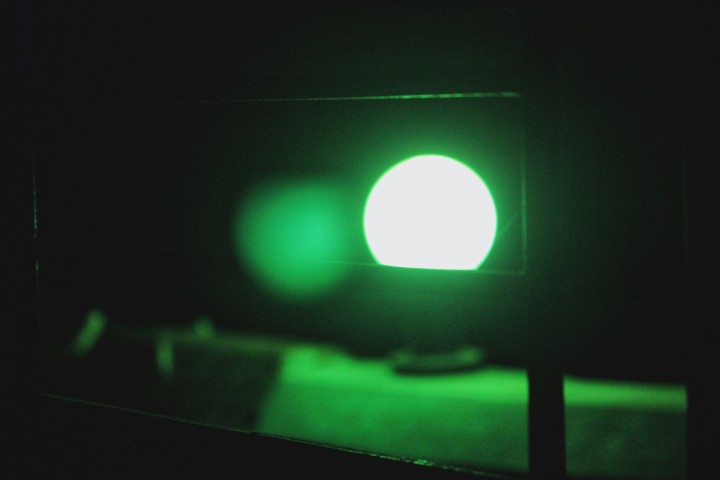Fibromyalgia and green light therapy may not be the first combination that springs to mind when considering treatment options. However, this pairing, steeped in innovative science and positive feedback, offers a glimmer of hope to many grappling with this condition. By fusing established medical understanding with forward-thinking therapeutic approaches, there is a genuine promise for improved well-being.

The Challenges of Fibromyalgia
Fibromyalgia is not just a series of symptoms; it’s an intricate condition characterized by persistent widespread pain, often accompanied by fatigue, sleep disturbances, and cognitive difficulties. For many patients, these symptoms aren’t merely physical; they carry a profound emotional weight. A constant barrage of pain can lead to feelings of frustration, anxiety, and even depression. Many therapies, from medications to physical therapy, attempt to address these symptoms. Still, the complex nature of fibromyalgia means that what works for one person might not work for another. This variability in effectiveness leads to an endless quest for relief, making the exploration of alternative therapies like green light therapy increasingly appealing.
The Light at the End of the Tunnel: Green Light
When we talk about green light therapy, it’s not some abstract concept; it’s a tangible, cutting-edge approach grounded in science. The central idea revolves around the exposure to green LED light. But why green? The human eye perceives different wavelengths of light in various colors. Green light, in particular, has been shown to have specific physiological effects that other colors do not. While the full mechanisms remain under investigation, the therapeutic potential of this specific spectrum of light is undeniable.
The Science Behind the Green
Delving deeper into the science, green light is believed to impact the body’s pain receptors. Preliminary studies suggest that it might help reduce the overactivity of the brain’s pain-processing regions. Additionally, there’s evidence that green light can modulate levels of certain neurotransmitters involved in pain perception, providing a biological basis for its potential effects. For instance, it might influence endorphin levels, the body’s natural painkillers, and regulate other neurotransmitters responsible for transmitting pain signals. While more research is undoubtedly needed, the early results are promising and have ignited a surge of interest in the therapeutic community.
Making it a Part of Your Life
For those interested in exploring green light therapy, understanding its nuances is crucial.
Choosing the Right Device
The market today boasts a plethora of green light therapy devices. From specialized lamps to wearable gadgets, the choices can be overwhelming. It’s essential to prioritize devices backed by scientific research and positive user reviews. Quality and consistency in light wavelength are key factors. Moreover, consulting healthcare professionals can offer guidance tailored to individual needs, ensuring the best possible outcome.
- 520 nm Precision Wavelength: Harness the calming power of green light therapy with a 520 nm wavelength.
- 520 nm Precision Wavelength: Harness the calming power of green light therapy with premium 420 lux illumination.
- GREEN COLOR THERAPY GLASSES: Studies indicate that Green chromotherapy light may suppress general chronic pain, and migraines and relieve symptoms of light sensitivity. In one study, subjects experienced an average 60% decrease in the intensity of their migraines and a drop in overall migraines experienced monthly.
- SOOTHING PURE GREEN LIGHT – Scientifically designed to ease light sensitivity and tension
- 7 colors and 7 functions: red light+infrared, yellow light, green light, blue light, blue-green, purple light, white light. Enjoy more than 7 treatments for facial and body skin at the price of one product, its good value for money.
Setting a Routine
Like any therapy, consistency with green light exposure is paramount. Most anecdotal and clinical evidence suggests that daily sessions can be beneficial. The duration can range anywhere from 20 minutes to an hour, depending on individual tolerance and the specific device used. It’s also worth noting that while some may notice improvements relatively quickly, others might require a more extended period of consistent exposure to discern tangible benefits.
Keeping Expectations Real
As with any treatment, especially one in its relatively early stages of widespread recognition, it’s vital to maintain realistic expectations. Green light therapy offers a lot of potential, but it’s not a guaranteed panacea. Some users report significant reductions in pain, while others notice subtler changes. It’s essential to approach the therapy with an open mind and view it as one of many tools available to manage fibromyalgia symptoms.
The Broader Picture: Fibromyalgia Management
It’s paramount to view green light therapy within the broader context of fibromyalgia management. While promising, it should be seen as a component of a comprehensive care plan. This plan might include medications, physical therapy, cognitive-behavioral therapy, and lifestyle modifications, like diet and exercise. Collaborating with healthcare professionals, joining support groups, and staying informed about the latest research are essential steps towards a holistic approach to managing fibromyalgia.
Final Thoughts
The intersection of fibromyalgia and green light therapy symbolizes the potential of modern medicine to offer innovative solutions to longstanding health challenges. Embracing such innovations, while also grounding expectations in reality, can pave the way for a brighter, more comfortable future for those living with fibromyalgia.
References:





